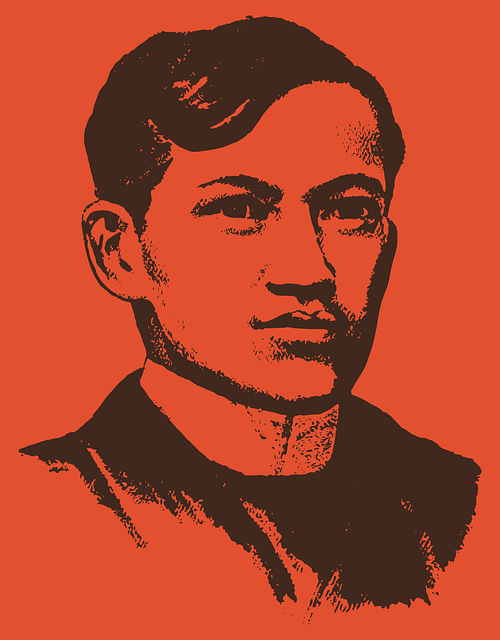Exploring Motivation on the Contributions of William James and Sigmund Freud

Introduction: Motivation, the driving force behind human behavior, has long fascinated psychologists seeking to understand what moves individuals to action. Two influential figures in the field, William James and Sigmund Freud, offered unique perspectives on motivation, each shaping our understanding in distinct ways. In this article, we explore the theories of motivation put forth by these eminent psychologists, delving into their key concepts and contributions to the field.


Page Contents
- 1 Exploring Motivation on the Contributions of William James and Sigmund Freud
- 2 A> William James and the Theory of Instincts:
- 3 B> Sigmund Freud and the Psychodynamic Theory of Motivation:
- 4 Table 1- Examples on Theories of Famous Psychologists William James and Sigmund Freud
- 5 Here’s a table illustrating examples of the theories of motivation proposed by William James and Sigmund Freud:
- 6 Conclusion:
Exploring Motivation on the Contributions of William James and Sigmund Freud

A> William James and the Theory of Instincts:
James, the Father of American Psychology, Philosopher, studied medicine at Harvard Medical School, Physiology Instructor then shifted to Psychology Instructor at Harvard College, with his interest in the Psychology of Religion his book on “The Varieties of Religious Experience” was published on 1902, and lectured Pragmatism on several universities. His lectures on Pragmatism at the Columbia University with lecture halls always heavily crowded and with people even standing outside the door.
William James, often regarded as the father of American psychology, proposed a Theory of Motivation grounded in the concept of instincts. In his seminal work, “The Principles of Psychology,” James argued that human behavior is largely driven by instinctual impulses aimed at preserving life and ensuring species survival.
1. Help Respond to Challenges
Central to James’ theory was the notion of innate instincts, pre-programmed patterns of behavior that guide individuals towards specific actions. These instincts, James posited, serve adaptive functions, helping organisms navigate their environment and respond to various challenges and opportunities.
2. The 3 Types of Instinct:
Self Preservation Instinct, Reproductive Instinct and Social Instinct
James identified several fundamental instincts, including the instinct for self-preservation, which compels individuals to seek food, shelter, and safety, and the reproductive instinct, which drives the pursuit of mating and procreation. He also proposed social instincts, such as the instinct for affiliation, which motivates social bonding and cooperation.
3. Criticisms
While James’ theory of instincts provided valuable insights into the biological underpinnings of motivation, it faced criticism for oversimplifying human behavior and neglecting the role of cognitive processes and social factors.

B> Sigmund Freud and the Psychodynamic Theory of Motivation:

Sigmund Freud was an Austrian Jewish Neurologists, Founder of Psychoanalysis, the most Influential Legislator in his era an obtained a medical degree in the University of Vienna concentrating on physiology and neurology.
Sigmund Freud, the founder of psychoanalysis, offered a different perspective on motivation, rooted in his psychodynamic theory of personality. According to Freud, human behavior is largely governed by unconscious drives and conflicts, which stem from innate biological urges and early childhood experiences.
1. The 2 Types of Instinct:
Eros the Life Instinct, and Thanatos the death Instinct
Central to Freud’s theory of motivation was the concept of psychic energy, or libido, which he believed to be the primary motivational force behind human behavior. Freud proposed that individuals are driven by two primary instincts: Eros, the life instinct, which encompasses the drive for pleasure, love, and creativity, and Thanatos, the death instinct, which represents the aggressive and self-destructive impulses.
2. Psyche 3 Distinct Components
The Id, Ego, and Superego
Freud further elaborated on the structure of the psyche, dividing it into three distinct components: the id, ego, and superego. The id, driven by instinctual desires, operates on the pleasure principle, seeking immediate gratification of basic needs and urges. The ego, guided by the reality principle, mediates between the demands of the id, the constraints of reality, and the moral standards imposed by the superego.
According to Freud, psychological conflicts arise when the demands of these three psychic structures are in conflict, leading to anxiety and inner turmoil. Motivated by the desire to reduce tension and achieve psychic equilibrium, individuals engage in various defense mechanisms, such as repression, denial, and rationalization, to cope with internal conflicts.
3. Criticisms
While Freud’s psychodynamic theory of motivation revolutionized our understanding of the unconscious mind and its influence on behavior, it has been criticized for its lack of empirical support and its emphasis on internal conflicts at the expense of external factors.

Table 1- Examples on Theories of Famous Psychologists William James and Sigmund Freud
Here’s a table illustrating examples of the theories of motivation proposed by William James and Sigmund Freud:
| Theory | Key Concepts | Examples |
|---|---|---|
| William James’ Theory of Instincts | – Innate instincts drive human behavior. | – Hunger instinct motivates individuals to seek food. |
| – Instincts serve adaptive functions for survival. | – Fear instinct prompts individuals to flee from danger. | |
| – Fundamental instincts include self-preservation, | – Reproductive instinct motivates individuals to seek mates. | |
| reproduction, and social bonding. | – Social instinct leads individuals to seek social connections. | |
| Sigmund Freud’s Psychodynamic Theory | – Psychic energy (libido) is the primary motivational force. | – Eros (life instinct) drives individuals to seek pleasure and love. |
| – Individuals are driven by unconscious desires and conflicts. | – Thanatos (death instinct) manifests as aggressive impulses. | |
| – The psyche is divided into id, ego, and superego. | – Id seeks immediate gratification of basic needs and urges. | |
| – Psychological conflicts arise from clashes between id, ego, and superego. | – Ego mediates between the demands of reality and the id’s desires. | |
| – Defense mechanisms are employed to cope with internal conflicts. | – Repression suppresses unacceptable desires into the unconscious. |
These examples illustrate how William James and Sigmund Freud conceptualized motivation through their respective theories, focusing on the innate instincts and unconscious drives that influence human behavior.
Conclusion:
William James and Sigmund Freud, through their respective theories of motivation, offered valuable insights into the complex interplay of biological, psychological, and social forces that drive human behavior. While James focused on innate instincts as the primary motivators of behavior, Freud emphasized the role of unconscious drives and conflicts in shaping our desires and actions.
Despite their differences, both James and Freud paved the way for subsequent research and theories in the field of motivation, laying the foundation for our current understanding of what moves us to act and achieve. By exploring their theories, we gain a deeper appreciation for the multifaceted nature of motivation and the diverse factors that shape our goals, desires, and aspirations.






